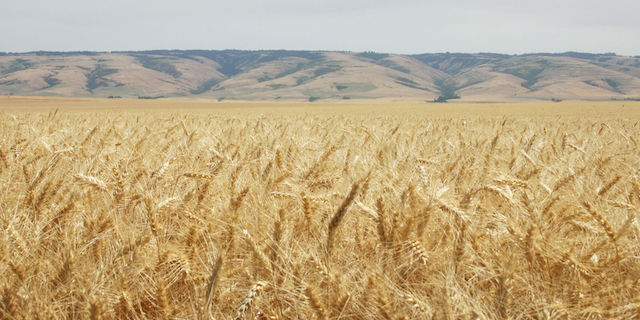ONLINE Dan Fulleton Farm Equipment Retirement Auction
THIS WILL BE AN ONLINE AUCTION Visit bakerauction.com for full sale list and information Auction Soft Close: Mon., March 3rd, 2025 @ 12:00pm MT Location: 3550 Fulleton Rd. Vale, OR […]
Published 9:16 am Thursday, January 30, 2025

The price to export U.S. soft white wheat is among the lowest on the world market, which bodes well for future demand even as Northwest farmers face increased costs, according to U.S. Wheat Associates.
Wheat from Argentina is lowest, at $227 per metric ton as of Jan. 24, according to AgriCensus. Wheat from Ukraine is $233 per metric ton.
Soft white wheat, primarily grown by Pacific Northwest farmers, is $233.32 per metric ton.
U.S. soft red winter wheat is $234.79 per metric ton.
Competing wheat from Russia is $237 per metric ton. Black Sea wheat is $241 per metric ton. Wheat from Germany is $249.25.
U.S. hard red winter is $249.67 per metric ton. Hard red winter wheat from the Pacific Northwest is $251.51 per metric ton. Hard red spring wheat grown in the region is $284.85
There are 36.74 bushels in a metric ton.
The low export price comes at a time when wheat prices are low for farmers, who face high input costs. Soft white wheat ranges from $5.95 per bushel to $6.20 per bushel.
“There’s clearly difficulties at the farmgate,” said Steve Mercer, vice president of communications for U.S. Wheat, the overseas marketing arm for the industry. “In terms of exports, we’re really working hard to tell that story, that U.S. wheat has value from a price standpoint, and always from a quality and versatility standpoint.”
The low prices reflect the volume of wheat available worldwide, Mercer said.
“When we compare production in a year to demand in a year, we’re still consuming more wheat than we’ve produced, but there’s also carryover,” Mercer said. “The volume of exportable wheat supplies is still high.”
Mercer also pointed to a strong U.S. dollar and larger crop expectations in Australia and Argentina.
“There are factors at work that are favorable to U.S. wheat sales right now,” Mercer added. “Price is certainly one of them.”
U.S. exports are up in the 2024-2025 marketing year in nine out of 10 markets, Mercer said.
“At those prices, the demand is going to be pretty strong,” he said, noting that soft white wheat also had a good year with production and high quality. It’s also versatile, with some sold to Korea as potential feed wheat.
Soft red winter wheat also had a good year, with slightly less production due to a reduced planted area.
Soft red winter sales are down mainly because of higher prices earlier in the marketing year. Last year’s sales included 1.3 million metric tons to China which has not been in the market this year, Mercer said.
The USDA projects total U.S. wheat exports will reach 23.1 million metric tons, a 10% increase from last year. It’s the highest level since the 2020/2021 marketing year, driven by a 49% rise in hard red winter wheat sales year over year, U.S. Wheat market anaylst Tyllor Ledford said in a market update.
Russia has had a “tough year,” Mercer said, affected by weather problem and reduced planted area amid quality concerns, with reports of 30% of the crop in poor condition.
“The market’s reacted to that, but it isn’t enough for the market to say ‘We’re concerned about supply,'” Mercer said.
Russia also has an export quota, but the market has already absorbed that, Mercer said.
U.S. Wheat is monitoring the new administration for tariffs and food aid, Mercer said. Soft white wheat is shipped to Yemen and other locations for food aid.
Mercer pointed to the Regional Agricultural Promotion Program (RAPP), beyond the Market Access Program and Foreign Market Development program, which are both in the farm bill, but funding amounts have not changed since the early 2000s. U.S. Wheat has received more than $20 million in export market development funds under RAPP.
“That is significant, there’s no doubt about it,” Mercer said. “It is allowing us to expand our work in markets like Africa, where there is potentially some demand for soft wheats. In other markets, it expands our ability to reach more people — for example, in the Caribbean region and Latin America.”
U.S. Wheat plans to bring South American bakers to its classes at the United Flour Mills Baking and Culinary School in Thailand.
RAPP funding is slated to run through 2029, Mercer said.